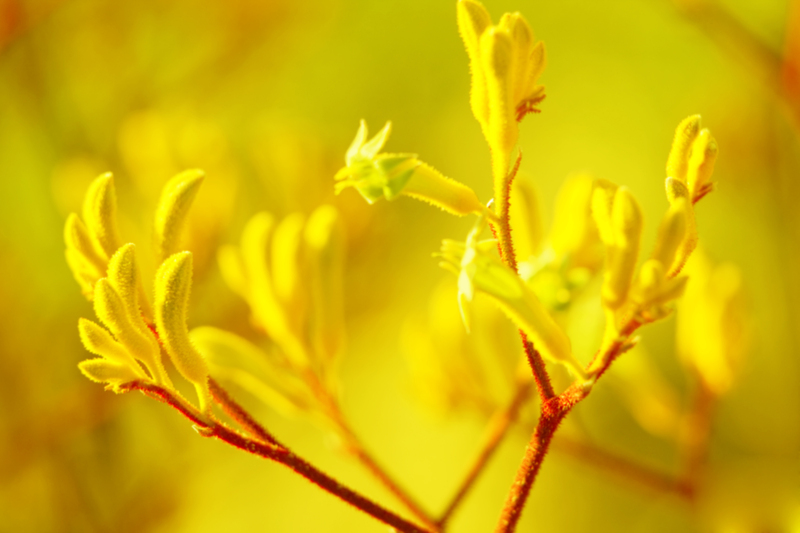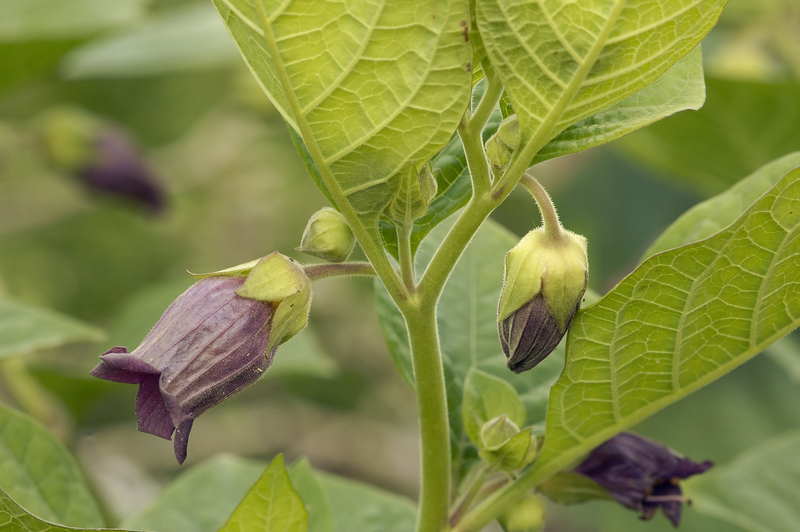Orchid Care 101: Beginner to Expert
Posted on 18/08/2025
Orchid Care 101: Beginner to Expert
Orchids are enigmatic, stunning, and highly rewarding plants. Whether you're new to houseplants or a seasoned horticulturist, learning how to care for orchids can truly enhance your gardening experience. In this comprehensive guide, we'll take you from the basics of orchid care to advanced tips for growing lush, beautiful blooms. If your goal is to nurture your orchid from a small seedling into a spectacular flowering plant, you're in the right place.
Understanding Orchids: The Basics
Before diving into care techniques, it's essential to understand orchids--their history, biology, and popular varieties. Orchids make up one of the largest plant families on Earth, with over 25,000 species and more than 100,000 hybrids. They are native to almost every continent, thriving in climates and environments as diverse as rainforests, grasslands, and even mountains.
Popular Orchids for Beginners
- Phalaenopsis (Moth Orchid): The most common and beginner-friendly orchid.
- Dendrobium: Known for its vibrant flowers and upright stems.
- Cattleya: Often referred to as the "Queen of Orchids" due to their large vibrant blooms.
- Oncidium (Dancing Lady): Famous for their sprays of small, yellow flowers.
For most beginners, the Phalaenopsis orchid is a great starting point. They're resilient, easy to care for, and bloom for months!

Choosing the Right Orchid
The first step in your orchid care journey is selecting the right variety for your environment. Consider:
- Light availability in your home.
- Humidity levels--do you live in a dry or humid climate?
- Temperature fluctuations.
Phalaenopsis are perfect for indoor growers, as they flourish in moderate temperatures and indirect light. If you're interested in more exotic varieties, consider starting with hybrids bred for hardiness and ease of care.
Essential Orchid Care: From Novice to Intermediate
1. Light Requirements
Light is crucial to the health and vitality of your orchid. Not enough light, and you'll end up with leggy plants that won't bloom; too much, and you risk scorched leaves. Here's how to strike the right balance:
- Indirect sunlight is ideal for most orchids.
- Place orchids near an east or west-facing window. A sheer curtain can help diffuse harsh light.
- Leaf color is a good indicator: healthy leaves are bright green, not yellow or dark green.
2. Watering Orchids Properly
Watering can be the trickiest part of orchid care. Overwatering is a common beginner mistake, leading to root rot and other ailments.
- Water once a week for most orchids.
- Let the potting mix dry out slightly between waterings.
- Use room-temperature, distilled water or let tap water sit overnight to dissipate chlorine.
- Never let orchids sit in water--ensure pots have drainage holes!
During winter, reduce watering frequency as orchids enter semi-dormancy.
3. Humidity and Air Circulation
Orchids love humidity! They generally thrive in 40-70% humidity, which may be higher than the typical household environment.
- Increase humidity by misting your orchids, especially in dry climates.
- Place a tray of pebbles and water beneath pots to naturally boost humidity.
- Use fans for gentle air circulation to prevent fungal diseases and encourage strong growth.
4. Orchid Potting Mix and Repotting
Orchids aren't potted in regular soil. They prefer special orchid bark or sphagnum moss, enabling airflow to their roots.
- Repot every 1-2 years to refresh the medium and prune rotted roots.
- Choose a clear plastic pot for Phalaenopsis, allowing you to observe root health.
- Repot when the bark breaks down or roots outgrow the pot.
5. Feeding Your Orchid
Regular feeding supports vibrant blooms. Use a specialized orchid fertilizer every two weeks in the growing season (spring/summer) and less in winter.
- Use a balanced formula like 20-20-20 or one designed for orchids.
- Dilute fertilizer to half strength to prevent root burn.
- Flush the potting mix with clean water every month to prevent salt buildup.
Expert Orchid Care Techniques
Once you've mastered the basics, you'll want to develop expert skills in orchid growing and advanced orchid care. Here's how:
1. Understanding Growth Cycles
Most orchids have defined growth and rest periods. Recognizing these cycles helps you tailor care:
- Growth phase: New leaves/roots appear. Increase water and fertilizer.
- Flowering phase: Spike and blooms emerge. Support spikes with clips and avoid drafts.
- Dormant phase: Little growth, fewer waterings, let the plant rest.
2. Encouraging Repeat Blooms
To get your orchid to rebloom:
- Trim old flower spikes just above a visible node (for Phalaenopsis).
- Simulate temperature drops of 10?F at night for several weeks in autumn.
- Increase humidity and exposure to bright, indirect light.
3. Propagating Orchids
Propagation can be challenging but immensely rewarding. Common techniques include:
- Keiki cuttings: Baby plants that grow along the flower spike in some species. Remove and pot once roots are established.
- Division: Mature orchids like Cattleya and Dendrobium can be divided at repotting time.
4. Troubleshooting Common Problems
Even experienced growers encounter challenges. Here are common orchid issues and solutions:
- Yellow leaves: Overwatering or too much light. Adjust care routine.
- Wrinkled leaves: Underwatering or root rot. Check roots and adjust watering schedule.
- No flowers: Insufficient light or nutrients. Move plant to a brighter spot, feed regularly.
- Pests and disease: Scale, mealybugs, or fungal issues. Isolate plant and treat with neem oil or recommended remedies.
Frequently Asked Questions about Orchid Care
1. Can I grow orchids indoors?
Absolutely! Most orchids thrive indoors, especially Phalaenopsis. Provide indirect light and high humidity for best results.
2. How do I know when to water my orchid?
Stick your finger into the potting mix--water only when it feels nearly dry. Over time, you'll learn your orchid's schedule.
3. Why did my orchid's flowers fall off?
This is normal after the blooming cycle. With continued proper care, your plant will bloom again in time.
4. Do I cut off an old flower spike?
Depends on the species. For Phalaenopsis, cut above a node to possibly encourage new blooms. For others, remove the entire spike.
Seasonal Orchid Care Tips
Spring & Summer
- Increase watering and fertilizing as new growth appears.
- Protect from intense midday sun.
- Repot if needed.
Autumn & Winter
- Reduce watering as growth slows down.
- Ensure nighttime temperatures drop for certain species to trigger blooming.
- Avoid cold drafts and keep humidity up.
Orchid Care 101: Glossary
- Epiphyte: A plant that grows on another plant, not parasitically but for support. Many orchids are epiphytic.
- Keiki: A small plantlet growing from the parent orchid.
- Node: A small bump on the flower spike where new growth can form.
- Pseudobulb: Storage organ found in some orchids, like Dendrobium and Cattleya.
Top Expert Tips for Stunning Orchids
- Monitor root health: Healthy roots are thick and white or green. Trim dead, mushy roots during repotting.
- Rotate your orchid: Ensures even light distribution for symmetrical growth.
- Keep leaves clean: Dust blocks light; wipe leaves gently with a damp cloth.
- Labels matter: Note flowering times and care needs to tailor your approach to each orchid species.
Patience is key--orchids can take months to rebloom but the result is always worth the wait.

Orchid Enthusiast Communities and Resources
Join local orchid societies, gardening groups, and online forums. Engage with experienced growers, share success stories, and ask for help when needed. Recommended resources include:
- The American Orchid Society (www.aos.org)
- Orchid Board (active online forum)
- Local garden centers and botanical gardens
Conclusion: Grow from Beginner to Expert
Orchid care is a beautiful journey, whether you're just starting out or seeking to elevate your skills. This orchid care tutorial provides the foundation for growing healthy, spectacular orchids in your home or greenhouse. Remember, every orchid is unique--so observe, adjust, and enjoy the process. Before you know it, you'll be proudly displaying abundant blooms and perhaps inspiring the next generation of orchid enthusiasts.
Now that you've learned the essentials and advanced techniques of orchid plant care, grab your favorite variety and embark on a rewarding journey from beginner to orchid growing expert!

